Mali
Welcome to Mali
Nestled in the heart of West Africa, Mali is a land of rich history, vibrant cultures, and breathtaking landscapes. This vast, landlocked country stretches across the Saharan and Sahelian regions, with the life-giving Niger River winding through its interior, nurturing fertile lands and vibrant communities. Mali is a place where ancient empires once thrived, where desert nomads still roam, and where music and tradition pulse through the streets and villages. For the adventurous traveler, Mali offers an unforgettable journey into a world of timeless heritage and natural beauty.
Mali is the eighth-largest country in Africa, covering over 1.24 million square kilometers, yet it remains sparsely populated, with most people living along the Niger River. The capital city, Bamako, is a bustling hub of culture and commerce, set against the backdrop of the river’s banks. Mali’s population is diverse, including ethnic groups such as the Bambara, Fulani, Dogon, and Tuareg, each contributing to the country’s rich tapestry of languages, traditions, and lifestyles. Historically, Mali was home to some of the most powerful empires in West Africa, including the Ghana, Mali, and Songhai empires. The Mali Empire, at its peak in the 14th century under Emperor Mansa Musa, was renowned for its immense wealth and cultural achievements. Timbuktu, once a key city in trans-Saharan trade, remains a symbol of Mali’s intellectual and spiritual heritage, housing ancient manuscripts and one of the world’s oldest universities. Despite its cultural wealth, Mali faces challenges, including political instability and security concerns, particularly in northern and central regions. However, many parts of the country remain accessible and safe for travelers who prepare carefully and respect local conditions.
1.
A Journey Through History and Culture
Mali is a treasure trove of historical sites and cultural experiences. From the mud-brick grandeur of Djenné’s Grand Mosque—the largest adobe building in the world and a UNESCO World Heritage site—to the ancient libraries of Timbuktu, travelers can explore the legacy of one of Africa’s great civilizations. The Dogon country, with its dramatic cliff-side villages and unique cultural practices, offers a glimpse into a way of life preserved over centuries.

2.
Authentic Music and Vibrant Traditions
Mali is often called the “Land of the Blues” for its profound musical heritage. The capital, Bamako, is alive with traditional music, where the kora (a lute-like instrument) and other indigenous sounds fill the nightclubs and festivals. Mali’s music legends, such as Salif Keita and Ali Farka Touré, have brought global attention to the country’s soulful rhythms. Visitors can immerse themselves in local festivals, markets, and ceremonies that celebrate Mali’s enduring cultural spirit.
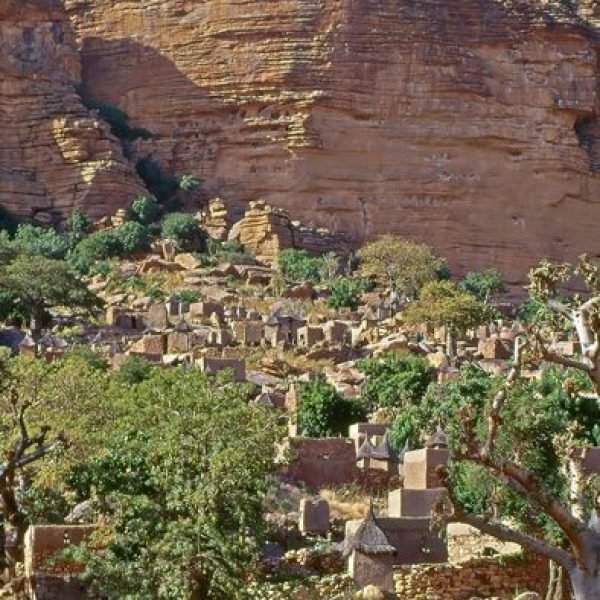
Planning Your Trip
Visa Information
Travelers to Mali must obtain a visa prior to arrival; visas are not issued on arrival. A valid passport with at least one blank page is required, along with proof of yellow fever vaccination. It is advisable to check with the nearest Malian embassy or consulate for the most current visa requirements and to apply well in advance to avoid delays or unexpected restrictions.
Best Time to Visit
The ideal time to visit Mali is during the dry season, from November to February, when temperatures are cooler and the weather is more comfortable for exploring. The rainy season, from June to September, brings heavy rains that can make travel difficult, especially outside urban areas. The dry season also coincides with many cultural festivals and events, offering richer experiences for visitors.
Getting To and Around
Bamako’s Modibo Keita International Airport is the main gateway for international travelers, with flights connecting from major hubs in Africa and Europe. Once in Mali, travel options include domestic flights, though these can be limited, and road travel, which is the most common way to get around.
Due to security concerns in some regions, it is highly recommended to travel with a reputable guide or tour operator familiar with local conditions. Public transportation can be unreliable and sometimes unsafe, so private vehicles or organized tours are preferred. In cities like Bamako, taxis and shared minibusses are available, but travelers should remain vigilant and prioritize safety.
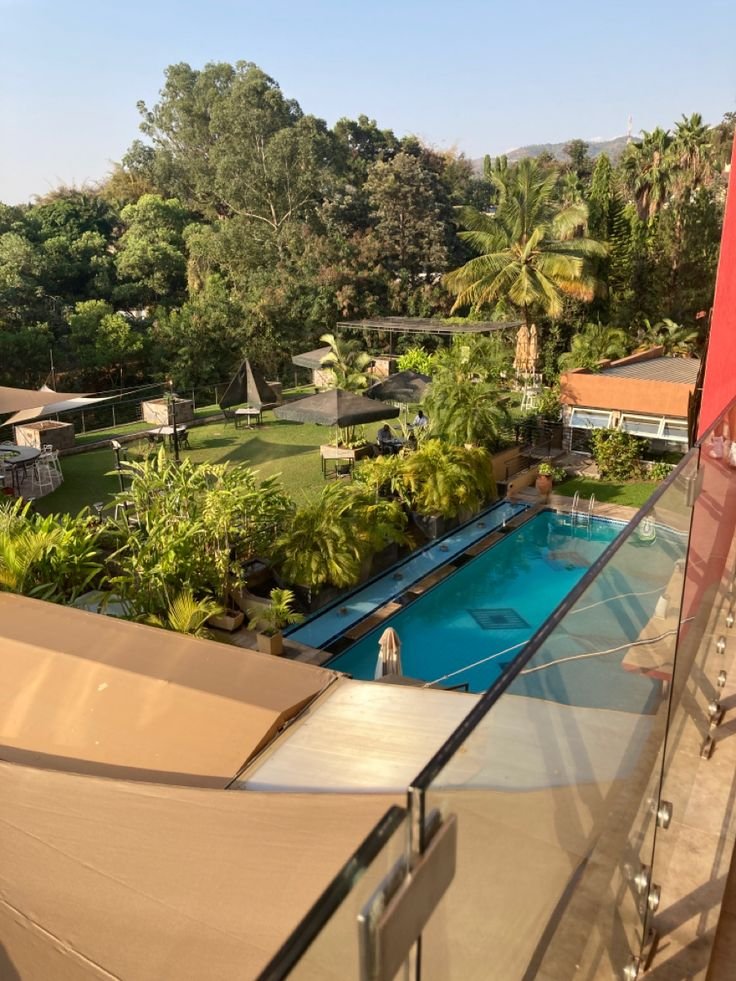
Accommodation
When visiting Mali, travelers will find a range of accommodation options that cater to different budgets and preferences, from affordable guesthouses and mid-range hotels to a handful of luxury lodges, primarily concentrated in the capital, Bamako, and key cultural hubs like Segou and Mopti.
Accommodation Options
In Bamako, the capital and largest city, accommodation ranges from budget-friendly hotels to more upscale establishments. Popular budget options include places like Hotel Le Loft, known for its discreet security measures and clean, comfortable rooms with amenities such as air conditioning and Wi-Fi. It offers a quiet retreat in a city that can be bustling and intense. Another affordable choice is Hotel Badala, which boasts a riverfront location, friendly staff, and filling meals, though some rooms may feel a bit dated. For travelers seeking a charming atmosphere, La Maison Rouge in Mopti offers individually decorated rooms with a romantic ambiance and excellent service.
For those looking for more comfort and luxury, Bamako hosts several higher-end hotels such as the Radisson Collection Hotel Bamako, which features outdoor pools, fitness centers, and spacious, modern rooms. These hotels often provide additional services like airport transfers, room service, and secure parking, which can be particularly important given Mali’s security considerations. Campement Kangaba is another option offering a lodge-style experience with outdoor pools and garden views, blending comfort with a relaxed setting.
Outside Bamako, options tend to be more limited but still comfortable. In Segou, Hotel Doni Blon offers spacious, clean rooms with air conditioning and a welcoming atmosphere, perfect for travelers exploring the cultural sites of the region. Many hotels and lodges emphasize local hospitality and often have on-site restaurants serving traditional Malian cuisine.
Security and safety are important considerations when choosing accommodation in Mali. Many travelers prefer hotels that provide secure entrances, 24-hour reception, and sometimes require guests to buzz in for entry. It is advisable to book accommodations with good reviews on cleanliness and safety, especially given the country’s ongoing security challenges in some areas.
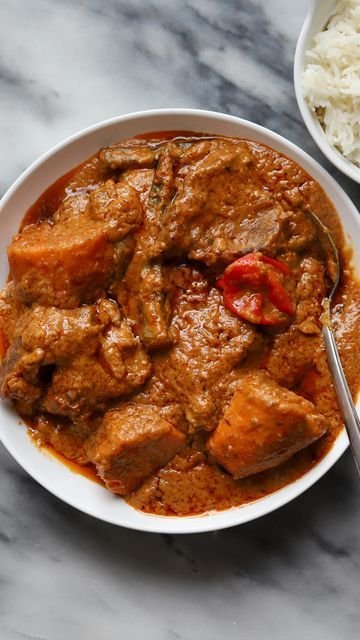
Food and Drink
Malian cuisine is a flavorful reflection of the country’s diverse cultures and agricultural bounty, with meals often centered around grains, vegetables, and meats, seasoned with local spices and herbs. Food in Mali is hearty and communal, with an emphasis on sharing and enjoying meals together.
The staple food in Mali is rice, millet, or fonio (a small grain), often served with sauces made from peanuts, okra, tomatoes, or leafy greens. One of the most popular traditional dishes is Tiguadege Na, a peanut butter stew usually cooked with chicken or beef and served with rice or millet. Another common dish is Jollof rice, a West African favorite, which is rice cooked in a rich tomato sauce with spices and sometimes combined with vegetables or meat.
Fufu, a dough-like food made from pounded millet or sorghum, is also widely eaten and typically served with flavorful soups or stews. Grilled meats, especially lamb and goat, are popular, often prepared as kebabs or roasted over open flames. Fish is common in areas near the Niger River, where fresh catches are incorporated into local recipes.
Street food is an integral part of the Malian food scene, offering quick and tasty options such as fried plantains, maafe (a peanut sauce stew), and brochettes (skewered grilled meat). Markets and street vendors provide a vibrant atmosphere where visitors can sample these authentic flavors.
For drinks, traditional beverages include bissap, a refreshing hibiscus flower drink that is sweet and tart, and gingembre, a spicy ginger drink often served chilled. Locally brewed millet beer, called dolo, is popular in rural areas and among locals, offering a unique cultural experience for adventurous travelers.
In urban centers like Bamako, you will find a mix of traditional eateries and more international restaurants catering to tourists and expatriates. Many hotels and lodges feature restaurants that serve both Malian dishes and international cuisine, providing options for different tastes and dietary needs.
When dining in Mali, it is customary to eat with the right hand, often sharing from a common bowl, which enhances the communal spirit of meals. Visitors should be mindful of local customs and hygiene practices, opting for bottled water and eating at reputable establishments to avoid health issues.
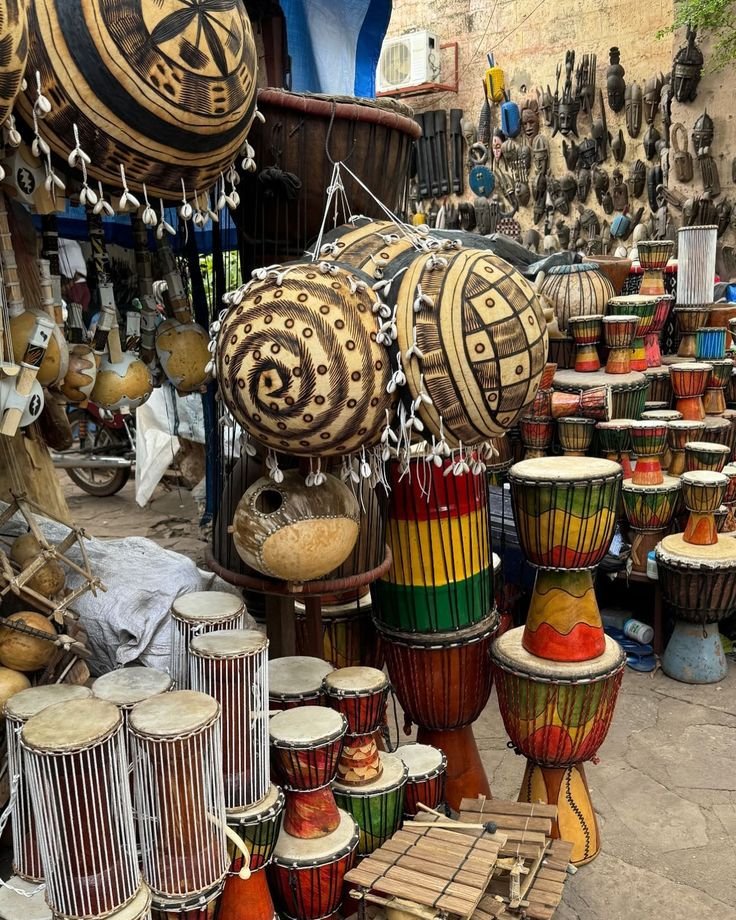
Must-See Attractions
Mali is a land steeped in history, culture, and natural beauty, offering travelers a unique window into West Africa’s rich heritage. Despite some security challenges in certain regions, many parts of Mali remain accessible and reveal some of the continent’s most remarkable sights.
- The Great Mosque of Djenné
Arguably Mali’s most iconic landmark, the Great Mosque of Djenné is the largest mudbrick structure in the world and a UNESCO World Heritage site. Located in the central region of Mali, Djenné itself is a living museum of Sudano-Sahelian architecture with its adobe buildings and bustling markets. The mosque, originally built in the 13th century and rebuilt in the early 20th century, is a stunning example of traditional African craftsmanship. Visiting on a Monday offers the added spectacle of the vibrant market that fills the square in front of the mosque, where locals sell crafts, food, and textiles. - Timbuktu and Its Ancient Manuscripts
Once a thriving center of Islamic scholarship and trans-Saharan trade, Timbuktu holds a legendary place in world history. Though travel to Timbuktu requires careful planning due to security concerns, those who make the journey can explore the Djinguereber Mosque and the Ahmed Baba Centre, which houses thousands of ancient manuscripts. These manuscripts represent centuries of knowledge in science, religion, and culture, making Timbuktu a symbol of Africa’s intellectual heritage. - Dogon Country and the Bandiagara Cliffs
For nature lovers and cultural explorers, Dogon Country offers a breathtaking landscape of dramatic cliffs rising up to 500 meters. The Dogon people live in traditional cliffside villages, preserving unique customs, dances, and ceremonies that have been practiced for centuries. Trekking through Dogon Country allows visitors to witness these ancient traditions firsthand and experience some of Mali’s most spectacular scenery. - Gao and the La Dune Rose
Situated on the Niger River in eastern Mali, Gao was a key city in the Songhai Empire. Visitors can enjoy a sunset trip to La Dune Rose, a stunning sand dune that glows pink at dusk. The city’s historical significance and riverside charm make it an intriguing stop for those interested in Mali’s past. - Mopti – The Venice of Mali
Mopti is a lively port city at the confluence of the Niger and Bani rivers. Known as the “Venice of Mali,” Mopti offers boat cruises on traditional pinasse canoes through bustling river markets and fishing villages. The city’s mosque, built in traditional adobe style, is a peaceful place to visit, and the sunsets over the river are unforgettable. - The National Museum of Mali in Bamako
For those who want a comprehensive introduction to Mali’s diverse cultures, the National Museum in the capital city Bamako is a must-visit. It houses an extensive collection of masks, textiles, musical instruments, and artifacts that tell the story of Mali’s ethnic groups and history.
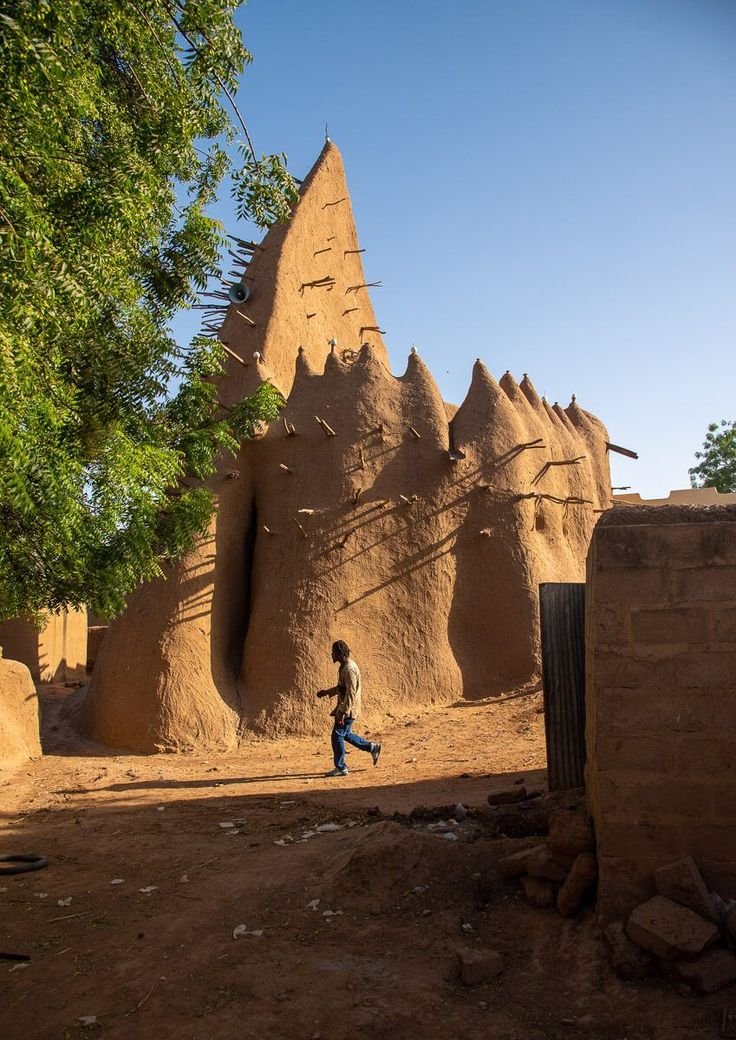
Must-Do Activities
Mali’s attractions are best experienced through immersive activities that connect travelers with the country’s culture, history, and natural environment.
- Explore Local Markets and Craft Villages
Markets are the heartbeat of Malian towns and cities. The Monday Market in Djenné is a sensory feast of colors, sounds, and smells, where you can buy traditional crafts, fabrics, and fresh produce. In Segou, nearby villages specialize in mudcloth (bogolan) production—a traditional fabric dyed with fermented mud. Visiting these craft villages offers insight into Mali’s artisanal heritage and provides opportunities to purchase authentic souvenirs directly from the makers. - Take a Boat Cruise on the Niger River
The Niger River is Mali’s lifeline, and exploring it by boat is a serene way to see rural life unfold. Pinasse boats ferry passengers through fishing villages, rice paddies, and riverine markets. Along the way, you can meet local fishermen, observe traditional farming methods, and enjoy the lush landscapes that contrast with Mali’s arid north. - Attend a Traditional Dogon Ceremony or Festival
If your travels coincide with Dogon festivals, such as the Dama, you’ll witness spectacular masked dances and rituals that honor ancestors and celebrate community. These ceremonies are deeply spiritual and visually stunning, offering a rare glimpse into one of Africa’s most enigmatic cultures. - Experience Malian Music and Dance
Mali is renowned for its musical heritage, often called the “Land of the Blues.” In Bamako and other cities, you can attend live performances featuring traditional instruments like the kora, balafon, and ngoni. Many hotels and cultural centers host concerts and dance evenings where visitors can enjoy the soulful sounds that have influenced global music genres. - Visit Historical Sites with a Knowledgeable Guide
To fully appreciate Mali’s rich history, it’s recommended to explore sites like Timbuktu, Djenné, and Gao with a local guide or organized tour. Guides provide context about the empires that once flourished here, the significance of ancient manuscripts, and the architectural marvels you’ll encounter. They also help navigate logistical and security considerations. - Trekking and Hiking in Dogon Country
For adventurous travelers, trekking between Dogon villages offers both physical challenge and cultural reward. Trails wind through dramatic cliffs, past ancient granaries, and into hidden caves. Along the way, you can meet villagers, learn about their customs, and enjoy panoramic views of the Sahelian landscape. - Sample Malian Cuisine in Local Eateries
Food is an essential part of the Malian experience. Trying local dishes such as tiguadege na (peanut stew), jollof rice, and grilled meats in traditional restaurants or street stalls connects you to the daily life of Malians. Pair your meal with bissap (hibiscus drink) or ginger juice for a refreshing taste of local flavors. - Photograph Mali’s Unique Architecture and Landscapes
From the mudbrick mosques of Djenné and Mopti to the colorful markets and river scenes, Mali offers endless photographic opportunities. Early mornings and late afternoons provide the best light to capture the warm tones of adobe buildings and the vibrant life of the streets.
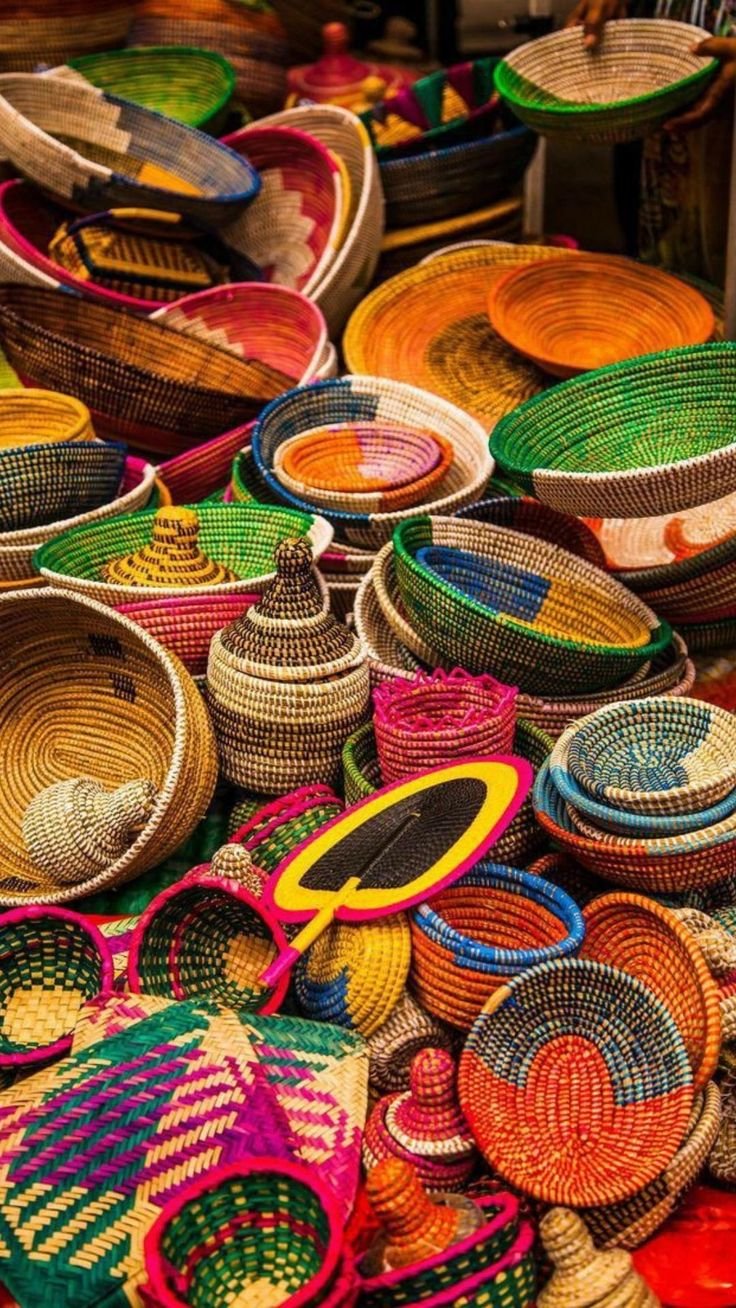
Travel Tips
Traveling to Mali in 2025 offers a unique opportunity to explore a country rich in history, culture, and natural beauty. However, it also requires careful preparation and awareness due to ongoing security challenges. This guide provides essential travel tips to help you navigate Mali safely and respectfully, while also introducing you to local customs and language basics that will enrich your experience.
Safety Advice
Security Situation and General Precautions
Mali faces significant security risks, including terrorism, kidnappings, armed banditry, and violent crime, particularly outside the capital Bamako and in northern and border regions. Kidnappings targeting foreigners have occurred throughout the country, including areas around Bamako, Gao, and Kidal. Terrorist attacks and armed robberies are also a concern, especially after dark.
To minimize risks:
- Avoid travel outside Bamako unless absolutely necessary. Many governments advise against all but essential travel beyond the capital due to unpredictable security threats.
- Do not travel after dark. Most incidents occur at night, so plan your movements during daylight hours only.
- Use trusted transportation. Arrange airport pickups and intercity travel through reputable companies or your accommodation. Avoid self-driving due to poor road conditions and security checkpoints.
- Vary your routes and schedules. Avoid predictable travel patterns to reduce vulnerability to targeted attacks.
- Travel in groups when possible. Solo travelers are more vulnerable to crime and kidnapping.
- Keep doors locked and windows closed in vehicles. Be alert to suspicious behavior, and if your vehicle is targeted, leave the area quickly.
- Stay informed. Monitor local news, follow instructions from authorities, and avoid demonstrations or large gatherings, which can turn violent unexpectedly.
- Secure your belongings. Petty crime such as pickpocketing is common, especially in crowded areas. Keep passports, money, and valuables in secure, hidden places.
- Carry photocopies of important documents. Keep copies of your passport’s photo page, visa, and vaccination certificates separate from the originals.
- Register with your embassy. Inform your embassy of your travel plans and keep their contact information handy.
Health and Medical Tips
Malaria is prevalent in Mali, so taking prophylactic medication before, during, and after your trip is essential. Consult your doctor for the best preventive medicine and other vaccinations such as yellow fever, which is mandatory for entry.
Drink only bottled or purified water and avoid street food that may not meet hygiene standards. Carry a basic medical kit and know the location of the nearest hospital or clinic, especially in Bamako.
Road and Travel Safety
Road conditions vary widely. While major roads from Bamako to southern cities are paved, many rural roads are unpaved and can become impassable during the rainy season (June to September). Four-wheel-drive vehicles are recommended for travel outside urban centers. Gas stations are scarce in remote areas, so keep your tank at least half full and carry extra water and food.
Be cautious at police checkpoints, as corruption is common. Officials may request unofficial payments; remain polite but firm, and know your rights.
Local Customs
Greetings and Social Etiquette
Malians are known for their warmth and hospitality. Greetings are an important part of social interaction and often involve inquiries about health and family. A simple “I ni ce” (hello) in Bambara, the most widely spoken language, is appreciated.
- Respect elders and community leaders. Use polite language and gestures.
- Dress modestly, especially in rural areas and religious sites. Lightweight, loose-fitting clothes that cover shoulders and knees are recommended.
- Remove shoes when entering someone’s home or a mosque.
- Avoid public displays of affection, which are considered inappropriate.
- When eating, it is customary to wash your hands before and after meals. Many meals are eaten communally from a shared bowl, using the right hand only.
- Photography: Always ask permission before photographing people, especially in villages or religious settings.
Religion and Festivals
Islam is the dominant religion, and Mali’s culture is deeply influenced by Islamic traditions. Friday is a holy day, and many businesses close for midday prayers. During Ramadan, be respectful by avoiding eating or drinking in public during daylight hours.
Mali celebrates many vibrant festivals, including the Festival in the Desert (though currently suspended due to security), traditional Dogon ceremonies, and music festivals in Bamako. Participating respectfully in such events offers a profound cultural experience.
Language Basics
Key Languages
Mali is linguistically diverse, with over a dozen languages spoken. The official language is French, used in government, education, and business. However, Bambara (Bamanankan) is the most widely spoken language and serves as a lingua franca across much of the country.
Learning a few basic Bambara phrases will endear you to locals and facilitate smoother interactions.
Useful Bambara Phrases
- I ni ce – Hello
- I ni sogoma – Good morning
- I ni wula – Good evening
- An ka kɛnɛ – Thank you
- Ala ka kɛnɛ – Please
- N baara – I am fine
- I ka kɛnɛ – How are you?
- N be se ka taa – I want to go
- Ala ka kɛ – Goodbye
- Muso – Woman
- Fama – Man
French Basics
Since French is the official language, knowing some basic French phrases is also helpful, especially in urban areas and when dealing with officials or in hotels.
- Bonjour – Hello
- Merci – Thank you
- S’il vous plaît – Please
- Où est…? – Where is…?
- Combien ça coûte? – How much does it cost?
- Je ne comprends pas – I don’t understand
Final Tips for a Smooth Journey
Traveling in Mali requires a respectful attitude, constant vigilance, and thorough preparation. While the security situation demands caution, the country’s rich cultural heritage, warm people, and stunning landscapes offer a deeply rewarding experience for those who take the time to understand and respect local realities.
By following safety advice, embracing local customs, and learning basic language skills, you can navigate Mali with confidence and enjoy a journey that connects you with one of West Africa’s most fascinating and historic nations.

